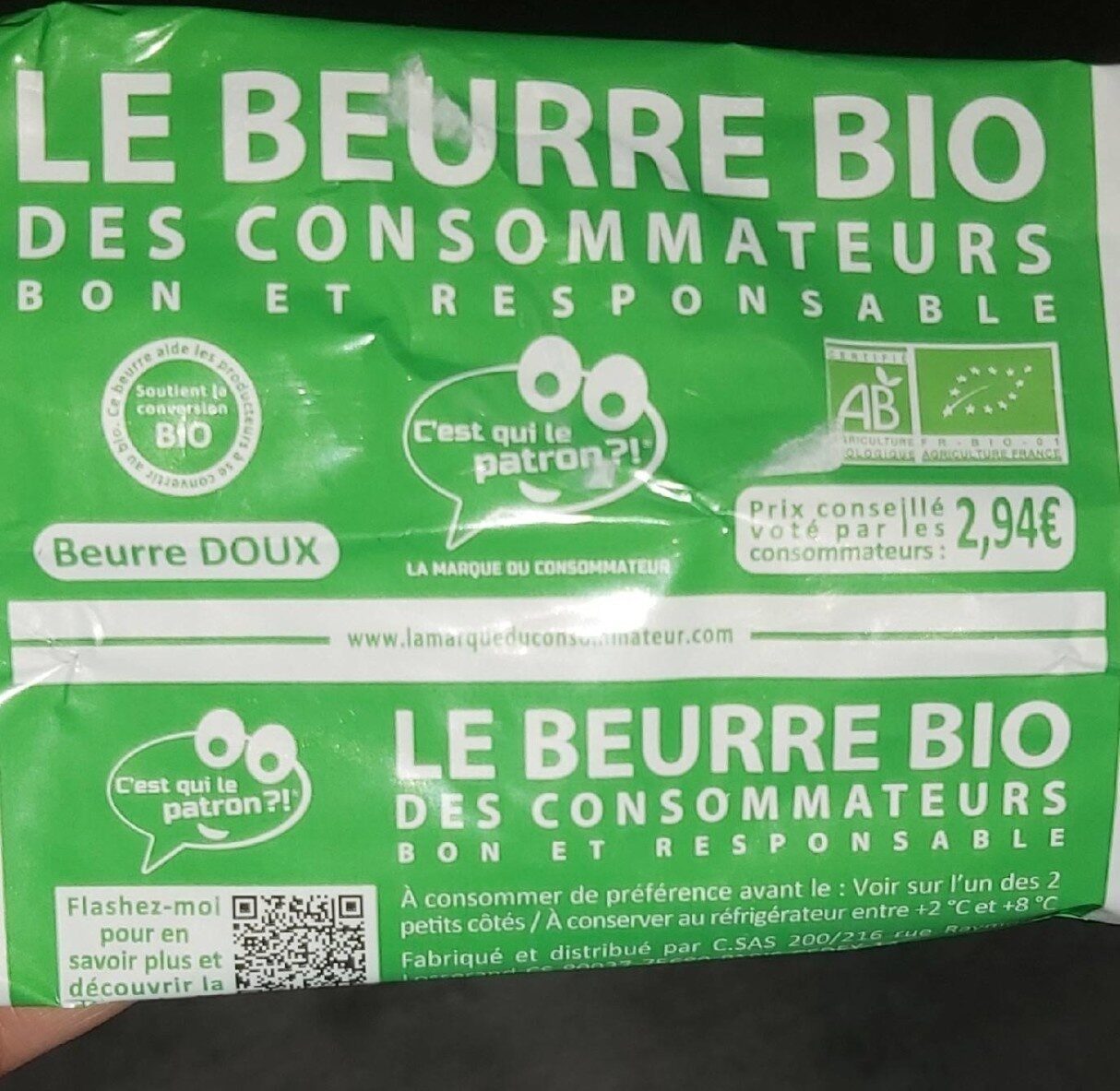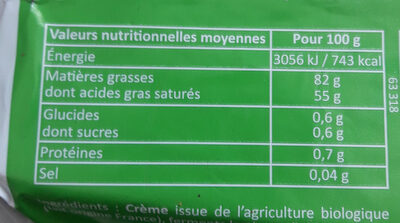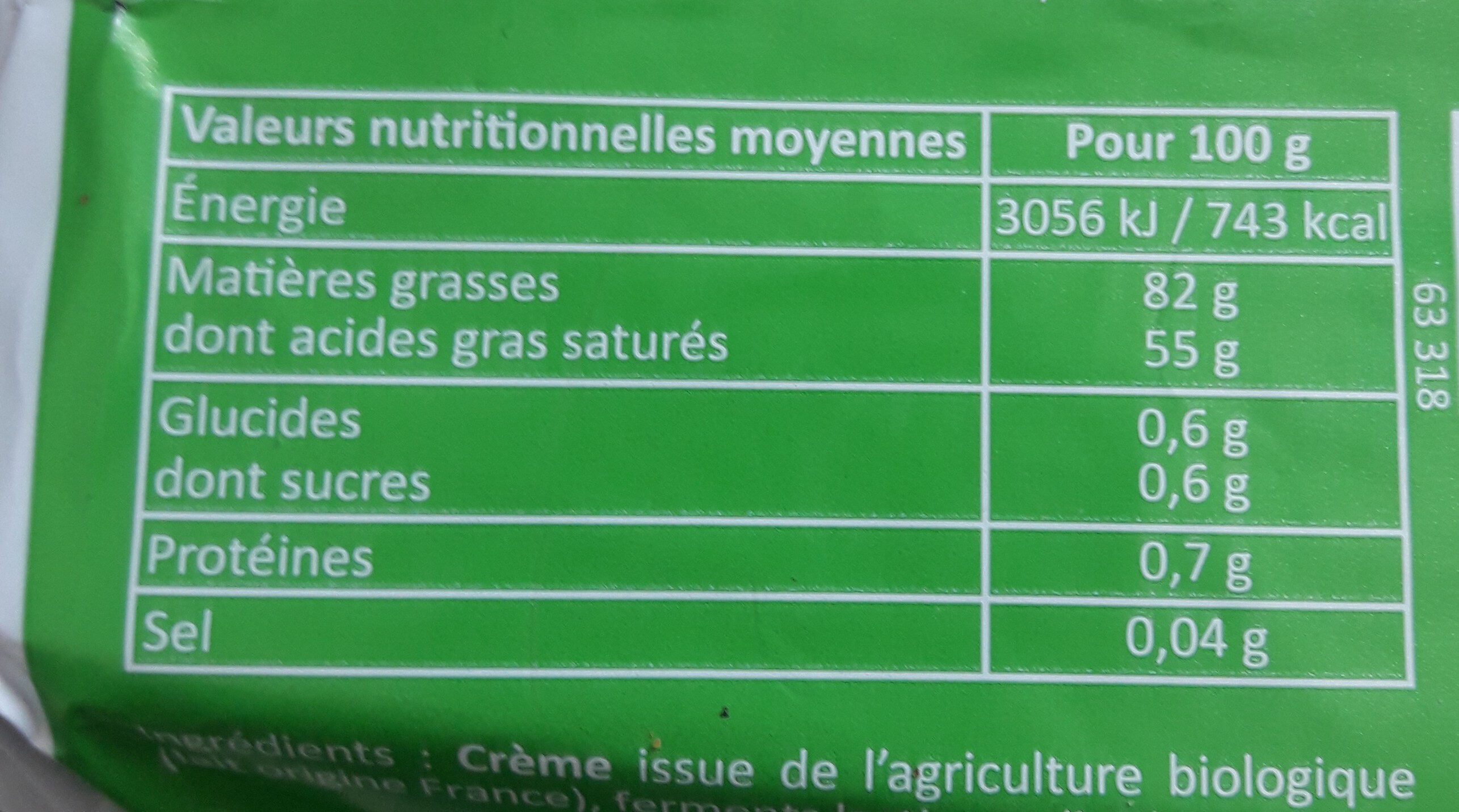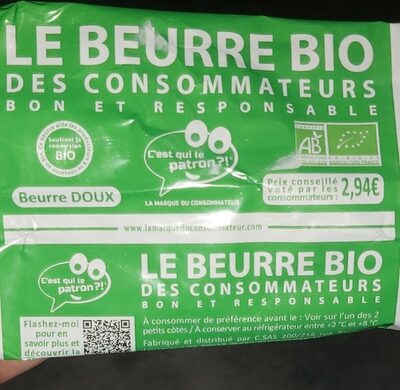Beurre bio doux - C'est qui le Patron ?! - 250 g
Barcode: 3700342357745 (EAN / EAN-13)
Common name: Beurre bio doux traditionnel
Quantity: 250 g
Packaging: fr:Plaquette
Brands: C'est qui le Patron ?!, La marque du consommateur
Categories: en:Dairies, en:Fats, en:Spreads, en:Spreadable fats, en:Animal fats, en:Milkfat, en:Dairy spread, en:Butters, en:Unsalted butters, en:Sweet cream butters
Labels, certifications, awards:
en:Organic, en:EU Organic, en:EU Agriculture, FR-BIO-01, en:French agriculture, AB Agriculture Biologique

Origin of ingredients: فرانسه
Manufacturing or processing places: France
Traceability code: FR 63.113.051 CE - Clermont-Ferrand (Puy-de-Dôme, France)
Stores: Monoprix, carrefour.fr, Intermarché
Countries where sold: فرانسه
Matching with your preferences
Report a problem
Data sources
Product added on by kiliweb
Last edit of product page on by sebleouf.
Product page also edited by buquet1000, chevalstar, clairecolbach, date-limite-app, driveoff, ecoscore-impact-estimator, firebladeur, inf, jdud, laurie-alz, leguerrier, moon-rabbit, nibis26, openfoodfacts-contributors, quechoisir, raphael0202, roboto-app, yuka.WEoxZU81Z2N0K1JTb01BZHhBL28zdXRWblllT1YycTZFdWt4SUE9PQ, yuka.ZHBnN1BJUmVnZnRiby9BRjhCL1IxTjV5NXJ1MWZGS2NlL0pOSVE9PQ, yuka.sY2b0xO6T85zoF3NwEKvlhJ_QdnF_RzWExzfq1C7wO6NKZHxZ4xpvKXFa6s, yuka.sY2b0xO6T85zoF3NwEKvllQZc8bBgzbaCD_gsBKW1-WhNbnhePxM0LfdaKs.














